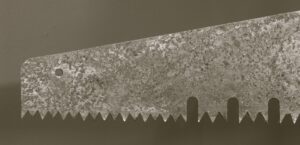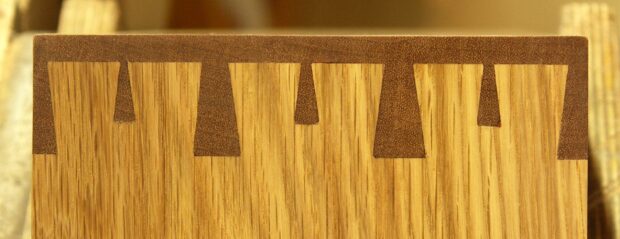Hound’s tooth Dovetails
Here is another handcut dovetail joint I made this weekend at the Penrhyn Castle workshops whilst my class was going on. Turned out OK. The secondary wood is Oak and primary wood is Sapele Mahogany.
I like the less showy and less stark contrast of oak with mahogany rather than the whiteness of maple and especially the showy figured maple. Again, the very appearance of this joint may be bit intimidating but if you have made a regular half lap dovetail. this just expands the concept of dovetailing a little that’s all.

Many people think this to be a sort of show-off dovetail joint and indeed many woodworkers use them for exactly that purpose, but in actuality we used more to add strength by increasing the friction surfaces within the joint itself and also give additional gluing surfaces too. We use it when we need to use a thicker drawer front or for the corners of stress components like on vise jaws. It’s superior strength gives much greater resistance to separation than the common or through dovetail or half-lap dovetail, but with the same lovely look as any other dovetail.

Our woodworking courses focus heavily on joinery and especially hand cut dovetail joints. Our hand tool woodworking courses focus on how to shape and file the saw teeth of dovetails saws and tenon saws. Regardless of whether you choose a Lie Nielsen saw or a Veritas saw, all saws must be sharpened regularly to work at optimum levels of fineness. Some of these makers produce progressive-cut saw teeth and our hand tool courses and seminars focus on these special-need saws too.


